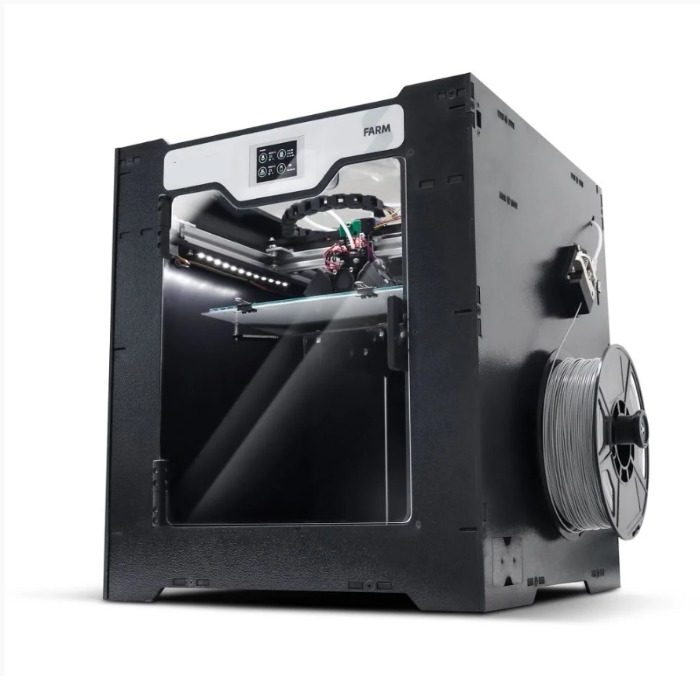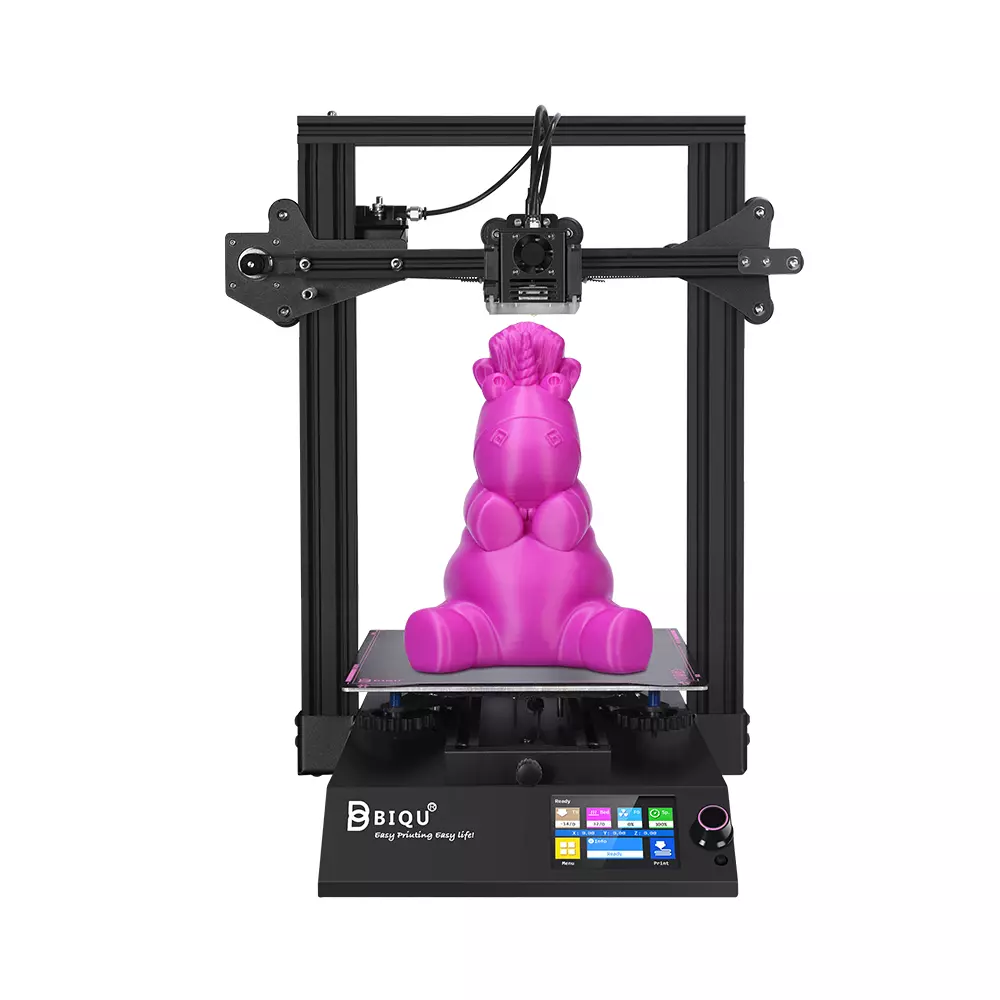Compare FARM vs BIQU B1
Comparison between the best 3D printers
Choose the best 3D printer at the best price. The cheapest 3D printers are here.
Buy a 3D printer here with 3D Fila.
 |
 |
|
| Model | FARM |
BIQU B1 |
| Printing Material | Filament | Filament |
| Buy Filament for Sethi 3D FARM | Buy Filament forBigTreeTech BIQU B1 | |
| Estimated price | $1127,00 | $269,00 |
| Manufacturer | Sethi 3D | BigTreeTech |
| Release Year | 2021 | 2020 |
| Print Volume [mm] | 240x240x240 | 235x235x270 |
| Printer Size [mm] | 550x42x500 | 412x402x492 |
| Weight [kg] | 15,7 | 8,00 |
| Power Loss Recovery | YES | YES |
| Enclosed printer | YES | NO |
| Bed Leveling | Automatic | Manual |
| Filament End Sensor | YES | YES |
| Bed type | Heated | Heated |
| Power supply system | Bowden | Bowden |
| Standard nozzle | 0,4 | 0,4 |
| Maximum Nozzle Temperature [°C] | 270 | 250 |
| Maximum Bed Temperature [°C] | 120 | 100 |
| Maximum printing speed [mm/s] | 80 | 100 |
| Filament holder | YES | YES |
| Camera for supervision | NO | NO |
| Recommended filaments | PLA, PETG, Tritan, Flex, ABS | PLA, TPU, ABS, PETG |
| Recommended slicers | Cura, Simplify, Slic3r | Cura, Simplify, Slic3r |
| Maximum Resolution [mm] | 0,1 | |
| Processor | 32 Bits BTT SKR V 1.4 | |
| Display | Touchscreen TFT | Touchscreen TFT 3,5'' |
| Power Supply | 450 W | 24V / 360W |
| Connectivity | USB | SD / USB |
| Operating systems | Windows, Mac, Linux | Windows, Mac, Linux |
| Date of registration in the system | 2022-10-11 | 2021-04-14 |
| Release date | 2021 | 2020 |
| Extra features | Sethis Farm printer offers a generous 240 x 240 x 240 mm print area, ideal for large projects. Its intuitive touchscreen display makes it easy to operate, while the intelligent sensor prevents problems by detecting filament shortages or jams. Its power recovery feature allows you to resume printing after interruptions. It stands out for its 9-point optical auto-leveling and high-performance heated bed, ensuring accuracy and versatility on different materials. Its 32-bit electronics and silent drivers promote a smooth and efficient experience. In addition, the Farm has a closed cabinet, expanding the range of usable polymers, and a turbo cooling system to speed up the process between prints. The machine also offers practicality with a storage drawer and simplified software updates. | The BIQU B1 is an advanced 3D printer with a silent 32-bit BTT SKR V1.4 motherboard and ARM Cortex-M3 CPU, offering DIY interfaces (I2C, SPI, WiFi) and dual Z-axis. Its dual BTT B1 TFT35 V3.0 operating system allows real-time monitoring and multiple printing modes, including G-code visualization effects. It stands out for its BIQU SSS (Super Spring Steel), ensuring easy model adhesion and simplified removal, with the possibility of using it on both sides. It includes a filament sensor, automatically pausing printing in case of filament breakage. The multicolored RGB lights integrated into the hotend allow you to view the printing status even at night. Additional notes include the need for a BIQU-specific Type-C cable and extra interfaces for smart filament sensor and BL Touch. |
| Support for multiple colors and materials (AMS and CFS) | NO | NO |
Notes * |
||
| Cost-benefit | 6 / 10 | 7 / 10 |
| Hardware | 3 / 10 | 2 / 10 |
| Tela | . | . |
| Print volume | 3 / 10 | 3 / 10 |
| Performance | 0 / 10 | 1 / 10 |
Conclusion |
| In comparing the Sethi 3D FARM and BIQU B1 3D printers, several factors emerge that can help potential buyers make an informed decision based on their needs and budget. The Sethi 3D FARM stands out with its larger print volume, sophisticated features such as automatic bed leveling, and an enclosed design that enhances material compatibility and print quality. Its robust build and intelligent filament management system make it a more reliable option for users who frequently engage in complex projects or require versatility in materials. Additionally, the premium components and advanced electronics contribute to a smoother and more efficient operation. On the other hand, the BIQU B1 is a more budget-friendly option, offering notable functionalities such as manual bed leveling, dual Z-axis support, and a vibrant display for operational ease. Its build quality and user-friendly design make it an excellent choice for beginners and hobbyists who want a decent 3D printing experience without a significant financial investment. It is also lighter and more compact, which could be appealing for users with limited space. Ultimately, if budget is a significant consideration and the user seeks a reliable, entry-level experience, the BIQU B1 is a strong contender. Conversely, for those who prioritize advanced features, larger print volume, and enhanced material handling capabilities, the Sethi 3D FARM justifies its higher cost, especially for users who frequently produce large or intricate prints. In conclusion, the decision should be guided by individual printing needs and investment capacity, balancing cost against desired capabilities and functionality. |

